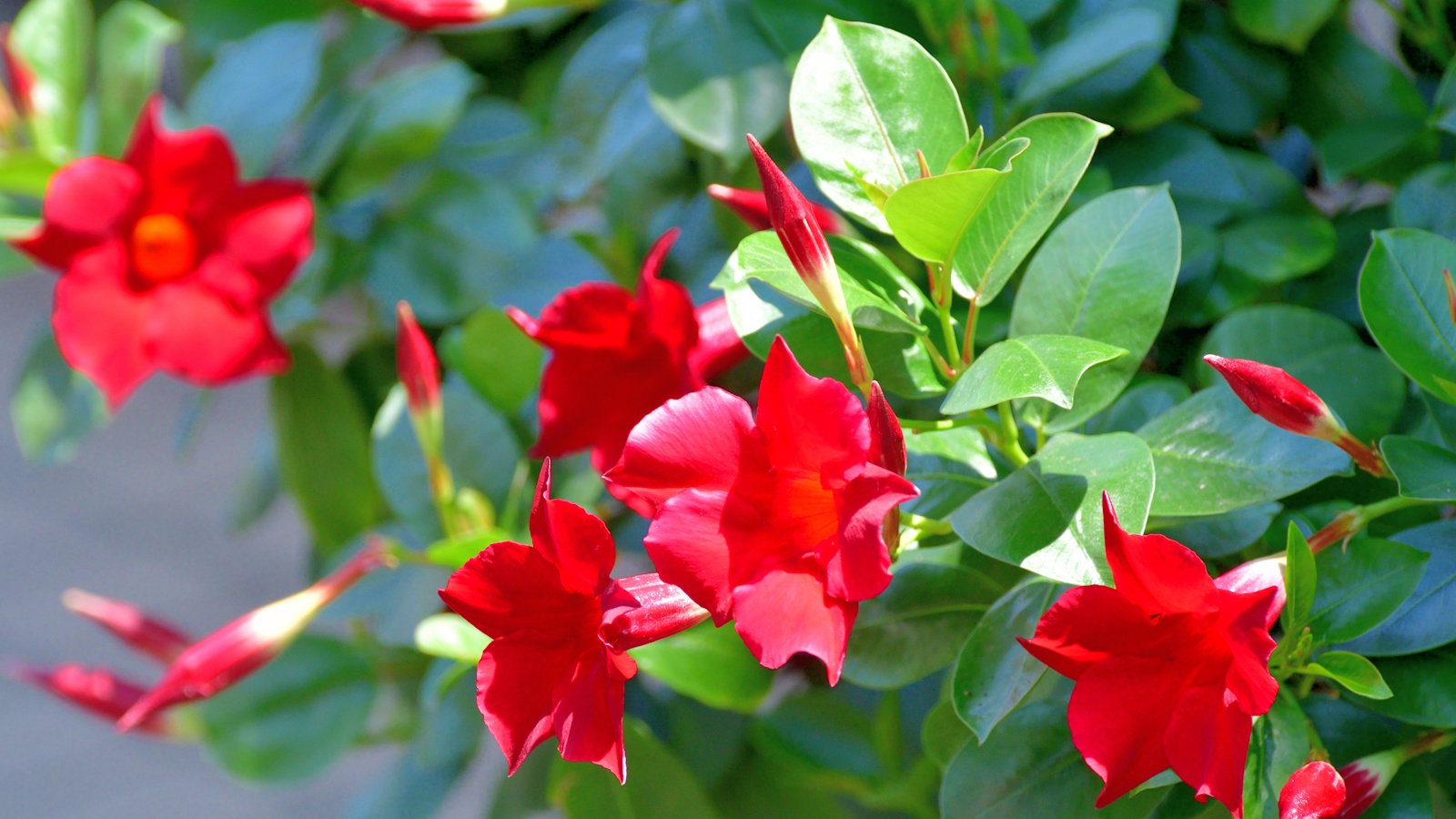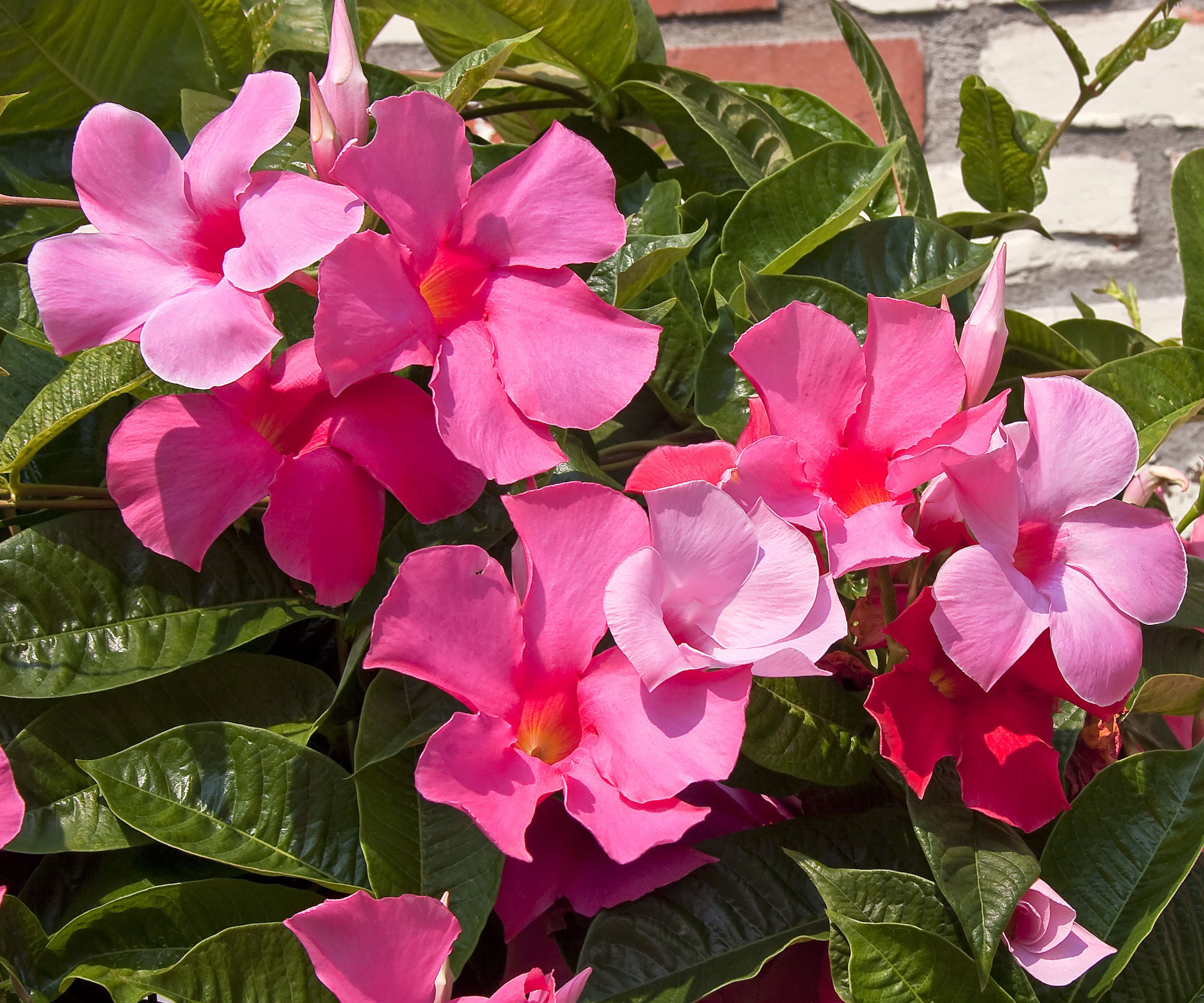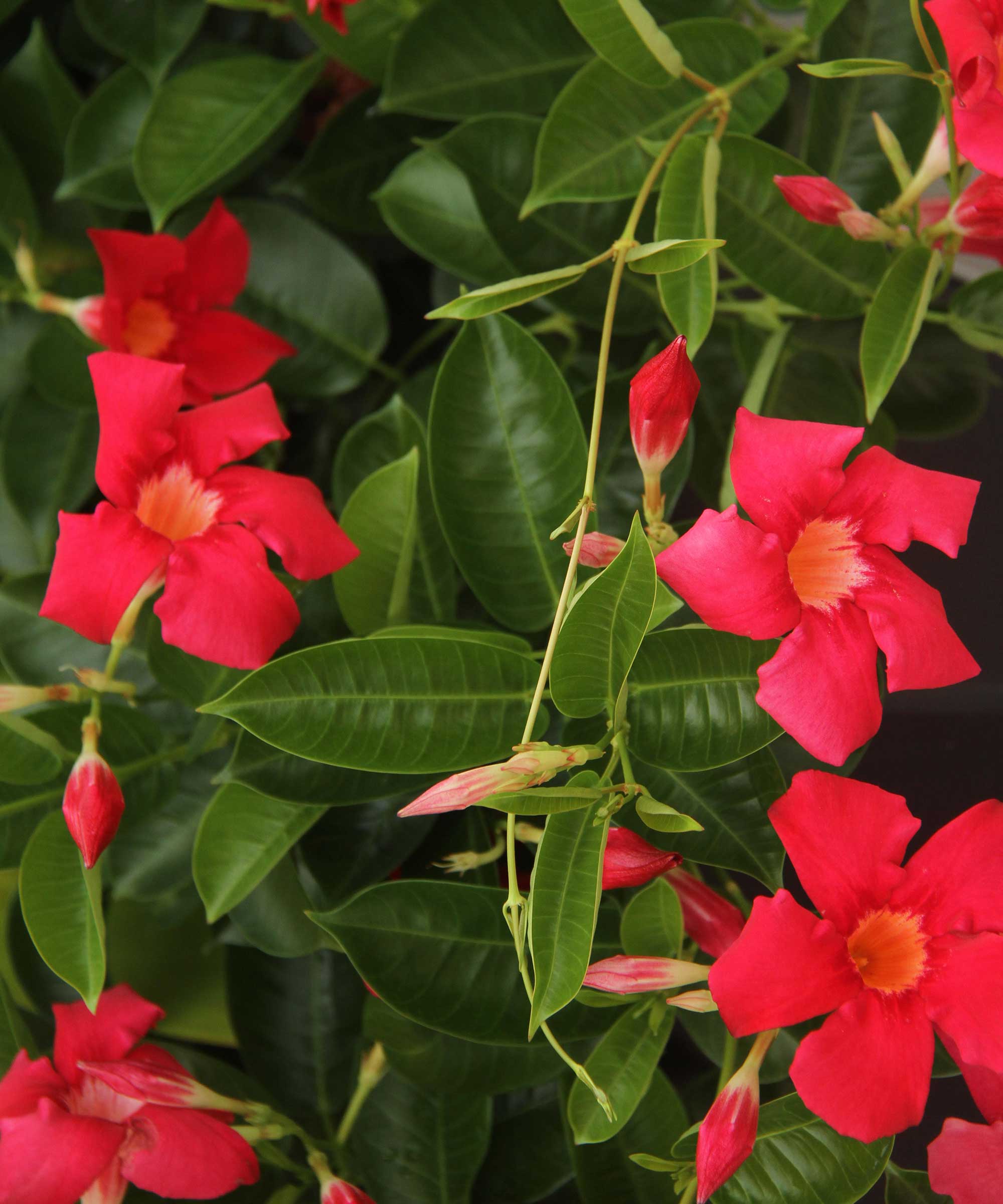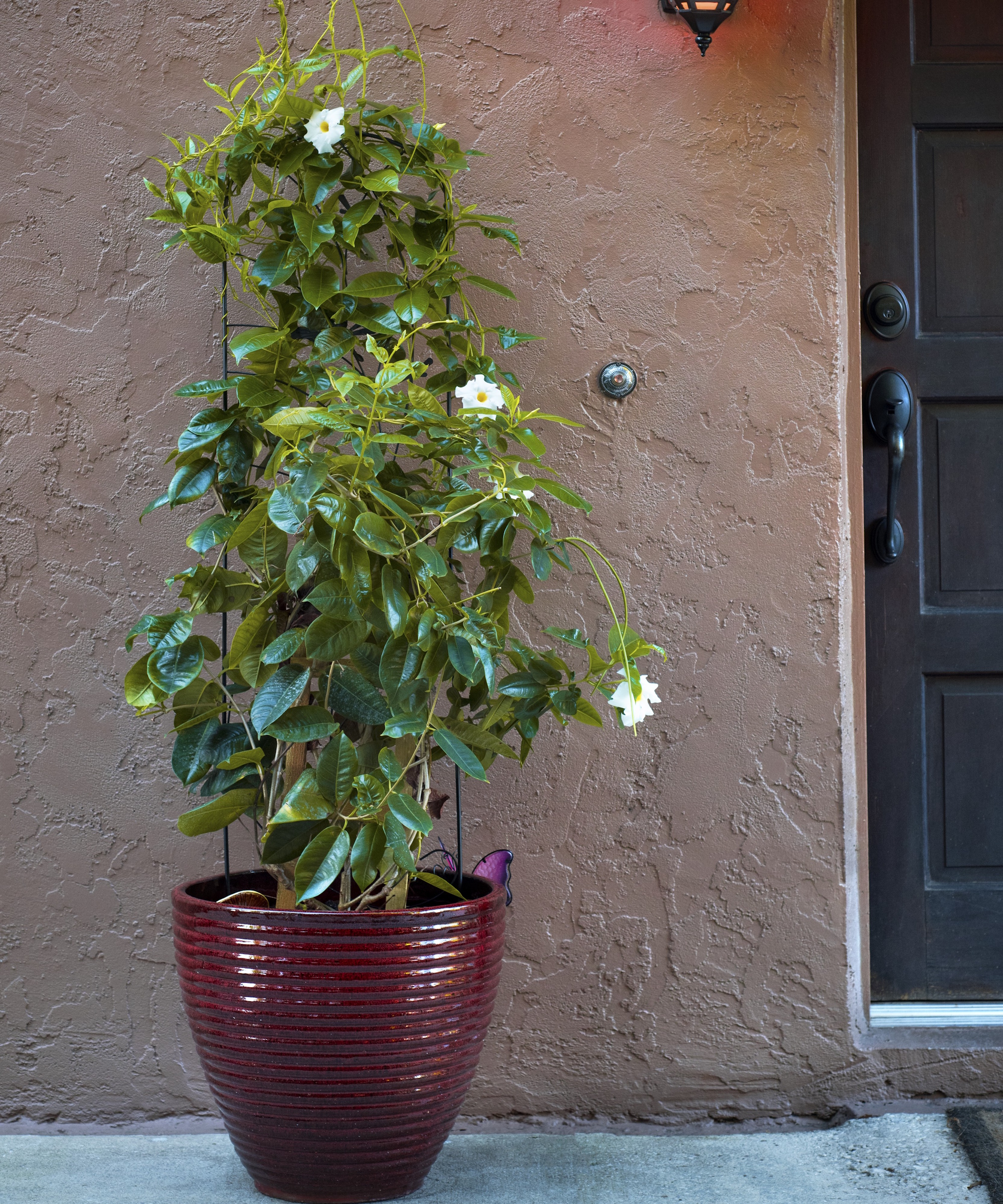How to grow mandevilla – expert advice for cultivating this tropical flowering vine, a gem of the Brazilian rainforest
With lush evergreen foliage and colorful blooms, mandevilla can transform a patio and elevate your pot displays


Mandevilla, also known as rocktrumpet, is a striking tropical vine that impresses with its impactful, fragrant blooms throughout summer. Native to the hot and humid regions of North, Central, and South America, this sun-loving plant thrives in bright, sun-baked spots, making it the perfect addition to a patio or terrace.
While its showstopping flowers often steal the spotlight, mandevilla plants also have evergreen foliage that deserves equal praise. Its waxy, pointed leaves are designed to repel water and facilitate rapid drainage, a vital trait in its native rainforest habitat where heavy rainfall is common. This unique foliage is not only an impressive plant adaptation, but I think contributes to the plant’s allure.
If you need any more encouragement, mandevilla can grow up to 10 feet in one season, offering quick coverage for a fence, arch, pergola or even wall. So, if you are looking for fast-growing climbing plants to add both color and fragrance to your plot, learning how to grow mandevilla is a brilliant idea. Here, one tropical plant expert from Florida shares top tips to ensure your climber thrives.

How to grow mandevilla
Mandevilla are some of the best climbing plants that produce masses of white, pink, red, yellow or orange blooms during summer. As a twining vine, mandevilla grows by wrapping itself around nearby stems and branches, so be sure to provide support to encourage the plant to grow where you want it to grow.
Growing habits of mandevilla

There are over 160 known species of mandevilla that are native to the tropical and subtropical regions of the Americas. Many are found in the hot and humid forests of Serra dos Órgãos, Brazil, where they enjoy consistent temperatures and high rainfall.
'Mandevilla is a tropical flowering climber known for its vibrant, trumpet-shaped blooms that emerge throughout the warm months,' says Tatiana Anderson, plant expert and co-founder of Top Tropicals.
'Popular plants for pollinators, mandevilla are only hardy in US hardiness zone 10 plus, but can be treated as a tender vine and protected in cooler, northern regions.
Design expertise in your inbox – from inspiring decorating ideas and beautiful celebrity homes to practical gardening advice and shopping round-ups.
'There are so many varieties that I could recommend,' Tatiana says. 'One of my favorites is ‘Alice du Pont’, which is a classic pink variety with large flowers and vigorous growth. The ‘Sun Parasol’ series is a good option if you are gardening on a balcony or small terrace, as this variety is compact.'
'Alice du Pont' live starter plants are available from Amazon.
'I also love 'Crimson Red', with deep maroon blooms that really pop against the glossy green foliage,' Tatiana says. 'In truth, there are so many wonderful varieties to suit any taste. Ask at your local tropical garden store and they are sure to have a range of shades available.'

Tatiana Anderson is the co-owner and co-founder of Top Tropicals, based in Fort Myers, Florida. Top Tropicals grow and sell a whole range of flowering and fruiting tropical plants.
Care guide for mandevilla

Soil: 'Mandevilla prefers well-draining soil enriched with organic matter,' Tatiana says. 'A mix of garden soil, compost and sand ensures good drainage and fertility. Mandevilla plants require acidic soil, so if your soil contains limestone, consider growing them in containers with a peat-based potting mix to maintain a lower pH.' Potting mixes for acid-loving plants are available from Walmart.
Light: 'Plant in a location with full sun to partial shade,' Tatiana advises. 'Locations with at least six hours of direct sunlight promote the best blooms, so consider growing up a house or in a pot next to the front door where they should enjoy maximum light levels.'
Watering: 'Water mandevilla regularly, keeping the soil moist but not soggy,' Tatiana recommends. 'During hot months in June, July and August, deep watering a few times a week is best. Towards the end of the growing season, you can reduce watering.'
Fertilizing: 'Feed mandevilla plants once every two to four weeks during spring and summer. It is best to use a balanced, water-soluble fertilizer high in phosphorus, such as 10-30-10, to encourage more blooms.' Organic bloom booster fertilizers are available from Amazon.
Pruning: 'You can prune mandevilla lightly after flowering to promote new growth and continuous flowering.' If you are growing in a container, you may need to cut back towards the end of summer to be able to move your plant indoors, but try to leave as much of the green growth untouched as possible.
Toxicity: All parts of mandevilla plants are toxic to people and pets. Sap from the plant can cause skin irritation, so wear gardening gloves when pruning. Keep an eye on pets who might be tempted to ingest any of the fallen colorful petals.
Pests: 'Mandevilla is relatively pest-resistant but can attract aphids, spider mites and whiteflies,' Tatiana says. To manage pests, you can spray with a neem oil solution, available from Walmart. 'Spraying neem oil weekly is effective if pests are present,' Tatiana says. 'Watch for fungal diseases in humid climates, which is a problem in hot and wet regions. To help, ensure good air circulation and avoid overhead watering.'
FAQs
Is there a difference between mandevilla and dipladenia?
'The names mandevilla and dipladenia are often used interchangeably, creating confusion,' Tatiana says. 'While they are closely related, there are key differences. Mandevilla is a vigorous woody vine with large, stiff leaves, ideal for trellises and fences. Dipladenia, on the other hand, has a more compact growth habit with smaller, smooth leaves. Dipladenia can be also trained on a trellis but also thrives in hanging baskets.'
Should I overwinter mandevilla indoors?
'In regions with frost, move potted mandevilla plants indoors to a bright but cool location (50-60°F),' Tatiana says. 'Reduce watering and stop fertilizing during the cooler season. You might also need to prune lightly before bringing it indoors to maintain its shape and size. Come spring, when the temperature rises, you can return your pot to a sunny location in the yard.'
If you are learning how to grow mandevila in pots, remember to repot your plant once every two to three years. 'Repotting is best done in early spring before active growth begins,' Tatiana adds. 'This will help to refresh the soil and provide more space for your vine to grow in a slightly larger container.'
For more tropical plant inspiration, check out our guide to some of the best plants to make a greenhouse smell nice, including growing advice for tuberose and passion flowers, both of which make for tropical additions to any pot display.

Thomas is a Content Editor within the Gardens Team at Homes and Gardens. He has worked as a professional gardener for both public spaces and private estates, specializing in productive gardening, growing food and flowers. Trained in Horticulture at the Garden Museum, he has written on gardening and garden history for various publications, including The English Garden, Gardens Illustrated, Hortus, The London Gardener and Bloom. He has co-authored a Lonely Planet travel book, The Tree Atlas, due out in 2024.
